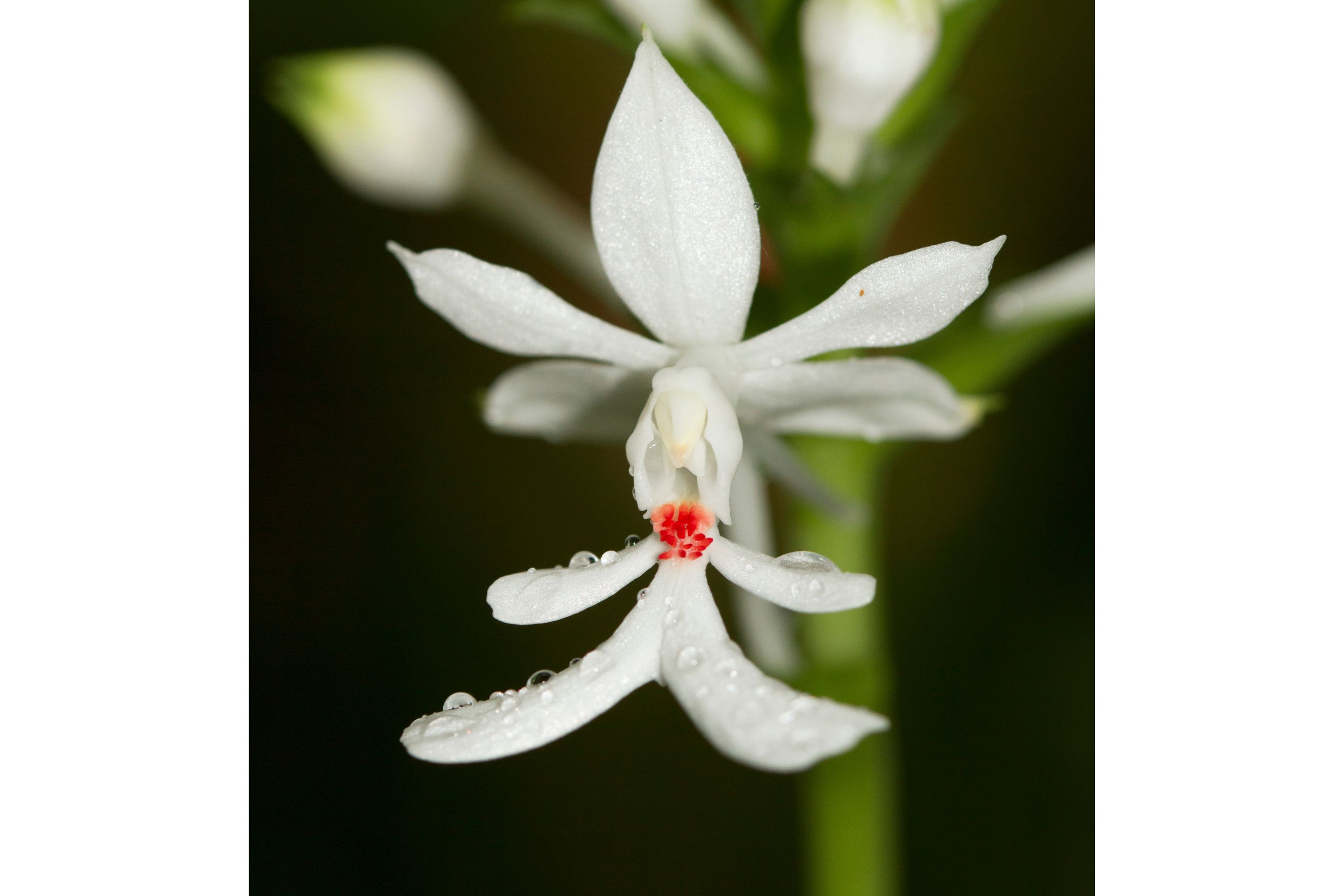Habenaria dentata
(Habenaria dentata)

Description
Habenaria dentata is a species of orchid native to the Himalaya, China, India, Indochina, Thailand and Myanmar. It is also found at Phalee. The whole plant is about 35 to 80 cm in height. It has a smooth round tuber that give rise to a single plant. Lower part of stem sheathed, middle leafy and upper part bracteate. Leaves 4 to 6 cm long, oblong to elliptic, 5 nerved, sometimes 7 also, the base of the leaf narrowed into a long tubular sheath. Spike 4 to 8 cm long, laxly flowered. Sepals sub-equal, broadly ovate, acute, spreading, the lateral pair sub-erect. Petals narrowly oblong, sub-acute, curved inwards, shorter than the sepals. Lip as long as the sepals, variable in breadth, with large cuneate or rounded, fimbriate or crenate side lobes and a small oblong entire apical lobe. Spur infundibuliform at the base, slender laterally compressed, geniculte, sub-clavate below the knee, longer than the shortly stalked beaked ovary. Stigmas separated by the area in the centre by the orifice of the spur. It generally blooms in August- September. Plants in the genus Habenaria are mainly terrestrial plants with fleshy tubers and upright, tall, thin or fleshy stems. The leaves are either arranged in a rosette at the base of the plants or scattered up the stem. The flowers are resupinate, usually small, white, green or yellowish and arranged along a tall flowering stem. The dorsal sepal and petals overlap to form a hood over the column. The labellum has a spur and usually three lobes which may be short or long and threadlike. The distinguishing feature of the genus is the presence of two club-shaped projections on the stigma. The genus Habenaria was first formally described in 1805 by Carl Ludwig Willdenow and the description was published in Species Plantarum. The generic name is derived from the Latin word habena meaning "thong", "strap" or "rein". Rein orchids are distributed in tropical and subtropical regions and with centres of diversity in Africa and Brazil. Seventeen species are known in Australia.
Taxonomic tree:







